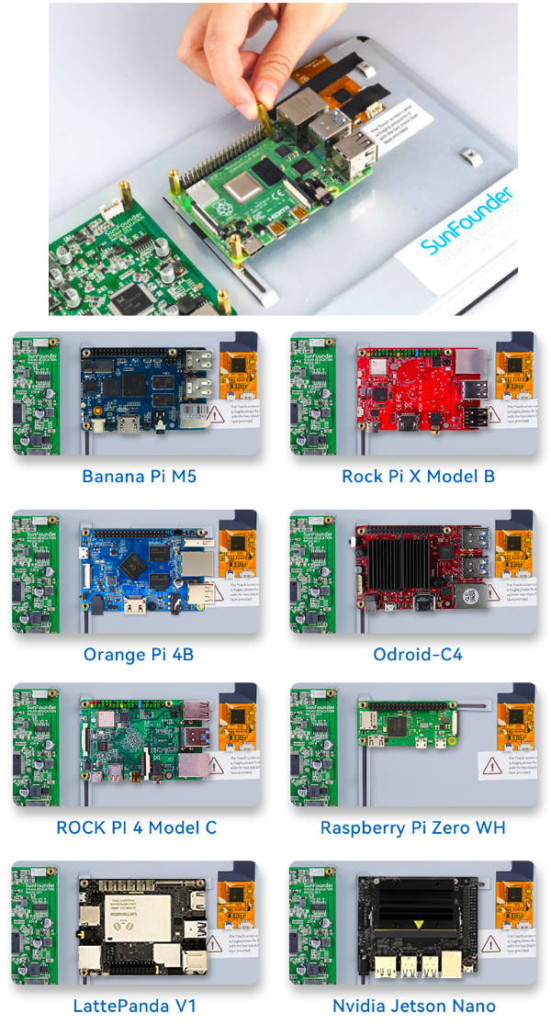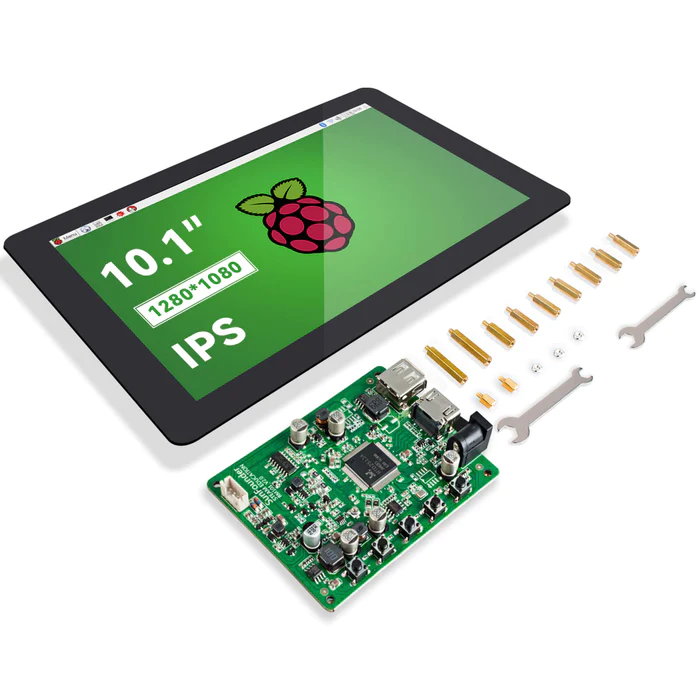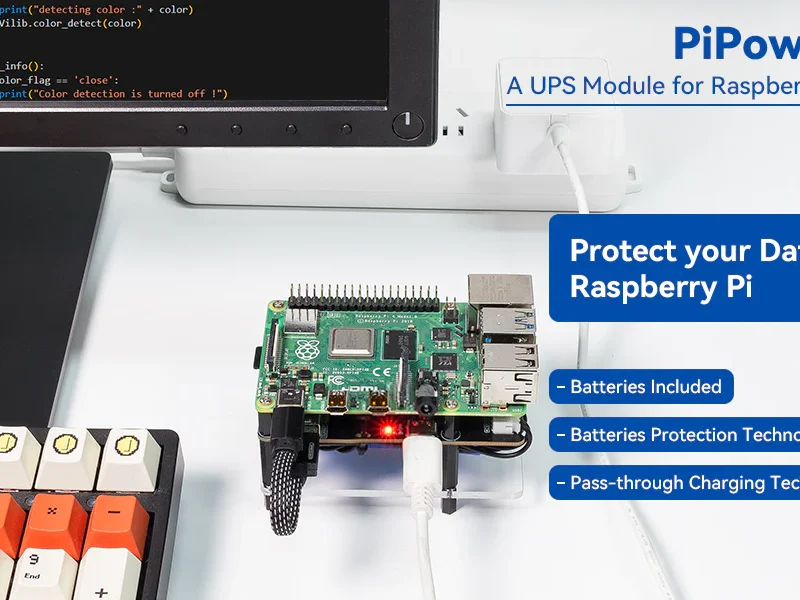Reivewed by www.magazinmehatronika.com
The SunFounder 10″ touchscreen is a great maker screen which needs some colour profiling to reach its full potential. The clever cable management solutions certainly add to the value, though.

SBCs have been changing industry and maker spaces for quite a while now – and while many projects are developed using CLI tools and SSH access, sometimes a more graphically impressive solution might be needed – especially when user comfort is important.
This is when many of us reach for a proper display – and while SBCs work great plugged into the TV, it’s not always convenient to hog up hardware already in use for a project. Here SBC screens come into play – a somewhat niche group of products that usually add display and touch functionality to these little computers – turning them into fully-fledged standalone devices.

Some SBC screens, like the Official Raspberry Pi display, use hard-to-come-by cables or obscure ports which limit their usability to a single model or family of computers. This is why HDMI-based screens offer a big advantage when board compatibility is key.
SunFounder sent us their 10.1” HDMI IPS display for review. This unit is on the larger side for this kind of equipment – and being HDMI-based, has a large list of devices supported. There’s another trick up its sleeve – the touch controller works over USB, which further increases compatibility – there’s basically no device on the market that doesn’t have USB!
While the screen ships in a somewhat bland box, the insides hold quite a neat assortment – with a nice, detailed manual, needed cables and tools, and the screen itself. There are even multiple cable options included for different SBCs, really showing the main design focus of the device.

Now, not including any kind of stand is a bit of a weird choice, but a common one when it comes to products like this one – as they are often meant to be built into an existing chassis. SunFounder did provide .stl files for 3D printing a simple stand which does the job – so we went ahead and did so. We don’t imagine this step being a problem for many people which have gotten this far.
The display can be used as a second display for consumer devices too, like laptops, phones and tablets. It works awesomely when used in this context, so we certainly recommend it for this.
Now, the panel itself is a 1280×800 one, which isn’t the highest resolution out there – but it’s plenty for the use case – and it looks sharp enough. Most SBCs don’t have great GPUs, so the lower res helps with keeping things running smooth. The contrast is a bit low, but the general color reproduction is accurate and easy on the eyes and the display can get plenty bright. The front glass feels really durable and the entire construction is solid and high-quality.

We’ve tried the display out with the Raspberry Pi 3B+, 4B and Zero 2 W, Banana Pi M4 and M5, Radxa Zero, RockPro64 and a MacBook Pro, and every single time it worked flawlessly. Touch was supported on all of these devices, across many different operating systems.
The display also powers SBCs through its own inbuilt 5V/3A power supply, and can connect to external speakers for audio, allowing compact, integrated solutions to be built. On the back there are versatile mounting posts that also accept boards of various formats. Brightness and volume are controlled in hardware, also marking a welcome change. The screen does not, however, have white balance and contrast settings so these have to be changed within a colour profile. Using our Spyder calibrator we determined that the washed-out feel of some colours was mostly due to an overblown blue channel when using the factory preset profile.
The ideal sweet spot for the screen is at 64% brightness (the blue issue is actually less prominent then), but due to the panel only outputting about 200 nits in this setting, we decided to calibrate it at full brightness, at 6500 K and gamma 2.2.

Driving the screen from our test rig’s RTX2070 we got a much better color balance and higher dynamic range, with pretty decent reds and yellows. The screen actually looked great!
Our ICC color profile for the screen can be found here:
https://www.magazinmehatronika.com/
download/SunFounder10inchTouchLCD.icm
Overall, we find this SunFounder panel a great deal for the price, with clever connection solutions which allow it to be connected to a truly astounding variety of devices while keeping all of its functionality intact. The convenient display is also capable of powering the boards, which brings down the amount of power adapters needed. While the contrast is a bit of a weak point, image clarity and brightness make up for it. We strongly recommend this screen to anyone looking for a bigger alternative to the official one, or a screen for more niche and rare SBCs, as there are next to none unsupported.
SunFounder official site: https://www.sunfounder.com
SunFounder 10.1″ display page:
https://www.sunfounder.com/collections/featured-products/products/10inch-touchscreen-for-raspberrypi
Amazon UK:
https://www.amazon.co.uk/dp/B096TRXX3T
Amazon DE:
https://www.amazon.de/dp/B08VNNLHVN
Amazon US:
https://www.amazon.com/dp/B0776VNW9C
Amazon Canada:
https://www.amazon.ca/dp/B0776VNW9C
Amazon Japan:
https://www.amazon.co.jp/dp/B083TP872K


